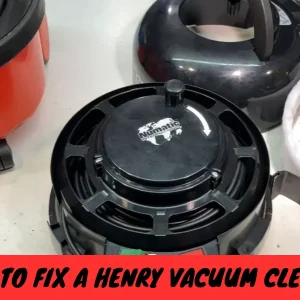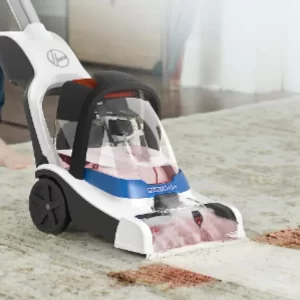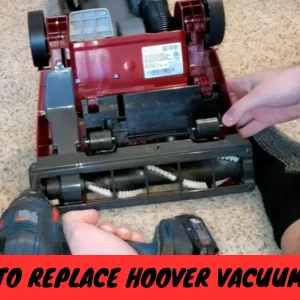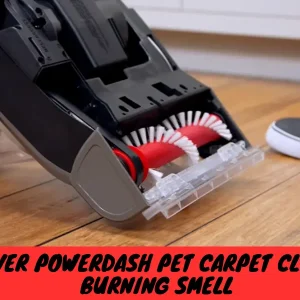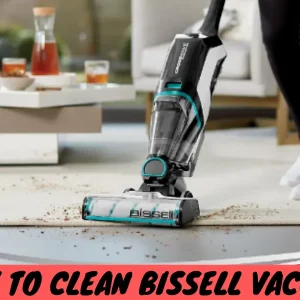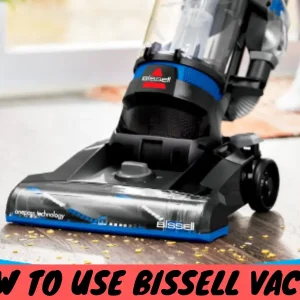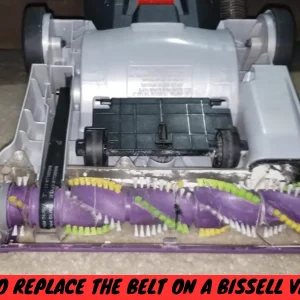“Miele Vacuum Troubleshooting Problems. Discover the cleaner, smarter solutions in your ultimate guide that you never knew you needed!”
“Miele Vacuum Troubleshooting Problems”
The troubleshooting process for Miele vacuums involves fixing numerous problems that can impair the appliance’s performance. A common problem is loss of suction power, which clogged filters or obstructed hoses can cause. If the vacuum does not turn on, this may indicate a problem with the power supply or a blown fuse. Strange noises during operation may be from a broken belt or material on the brush roll. To fix these problems, cleaning filters, clearing hose clogs, inspecting moving parts, and checking power connections are necessary. By following routine maintenance and user instructions, Miele vacuums can avoid these problems and work efficiently.
Relevant Article
- Why Miele Vacuum Is Not Turning On
- Miele Vacuum Brush Not Spinning
- How long do Miele vacuums last
- Miele vacuum powerhead troubleshooting
Miele Vacuum Troubleshooting Problems: Step by Step Guide
Miele vacuums have earned a reputation for their top-level quality and performance. They are designed to enhance the efficiency of your cleaning tasks. However, even the best vacuum cleaners can experience problems over time. This comprehensive guide, focused on ‘Miele Vacuum Troubleshooting Problems,’ will explore common issues that Miele vacuum owners may encounter and provide detailed troubleshooting and repair procedures. By completing this article, you will have a better understanding of these topics and the skills and confidence you need to keep your Miele vacuum in reliable operation for many years.
Miele Vacuum Cleaner Troubleshooting: 14 Easy Tips & Tricks
Now, let’s explore common problems that Miele vacuum owners may encounter.
Loss of Suction
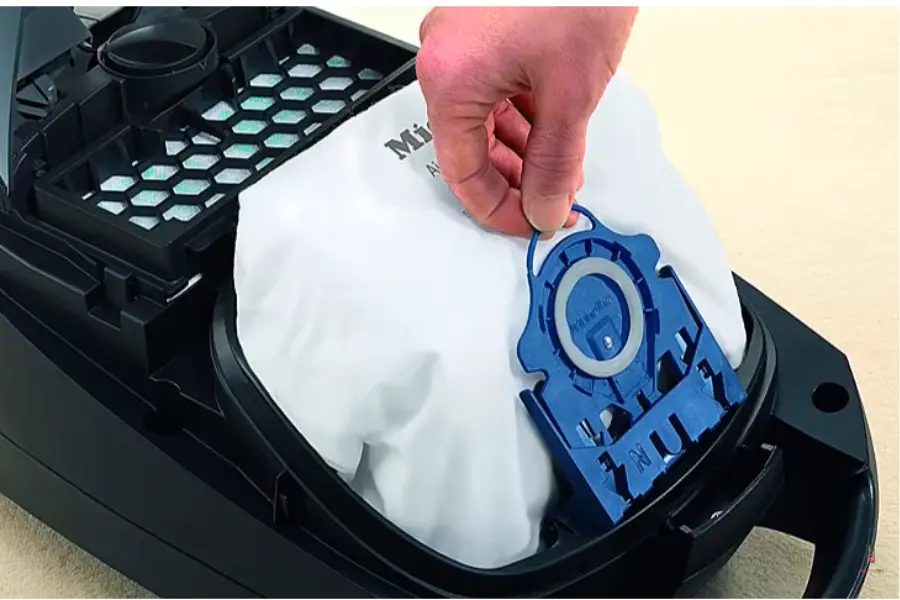
Problem: Your vacuum’s suction power has decreased, and it used to pick up dirt more effectively.
Possible Causes:
- Clogged Filters: One of the primary causes of reduced suction is a blocked or dirty filter. Filters collect dust and dirt,
- restricts airflow if you ignore it.
- Clogs in Hoses and Attachments: Hoses and attachments can become clogged with debris and foreign objects over time, reducing suction.
- Full Dustbin or Bag: An overflowing trash can or bag can significantly obstruct airflow, reducing suction power.
Troubleshooting Solutions:
- Clean or Replace Filters: For more information on how to clean or replace the filters, refer to your user’s handbook. Generally, filters can be washed and cleaned, ensuring they are completely dry. When the filters no longer work effectively, it’s time to replace them.
- Check Hoses and Attachments: Remove the hoses and attachments, and inspect them carefully for any obstructions or debris. Use a long, flexible brush or an upright coat hanger to remove any snags.
- Empty Dustbin or Replace Bag: Establish a regular practice of changing the bag or emptying the trash can when it is about half full. This easy action can have a powerful impact on maintaining suction power.
Unusual Noises
Problem: When using your Miele vacuum, you may notice unusual or loud noises.
Possible Causes:
- Foreign Objects: These sounds can be caused by small parts, debris, or even loose change finding their way into the hose or brush roll.
- Worn Brush Roll or Belt: Over time, the belt may lose elasticity, and the brush roll may fall off, both of which may cause abnormal noises during operation.
Troubleshooting Solutions:
- Inspect the Brush Roll: After turning off the vacuum and unplugging it, thoroughly inspect the brush roll for any signs of damage or foreign objects. If necessary, remove any obstruction using a pair of scissors or pliers.
- Examine the Belt: If the noise persists after removing the brush roll, it is essential to check the belt. Belts should be regularly inspected and replaced if they show signs of wear or damage. For detailed instructions on how to replace the belt, see your owner’s manual.
If you’re interested in knowing about more such informational blogs, then read our blog post on How to change filter in miele upright vacuum cleaner also you must know Miele Vacuum Troubleshooting Problems
Electrical and Power Problems
Problem: If your vacuum fails to turn on or there is a sudden power loss, follow these steps:
Possible Causes:
- Power Cord Issues: Check the power cord for visible damage, such as cuts, frays, or exposed wires.
- Tripped Circuit Breaker: Sometimes, a tripped circuit breaker can cause an unexpected power outage in your home.
Troubleshooting Solutions:
- Inspect the Power Cord: If you detect any obvious damage to the power cord, such as a cut, frayed, or exposed wire, it is critical to replace it. Please do not attempt to repair the cord yourself, as it may be dangerous.
- Check the Circuit Breaker: Inspect the course breaker in your home’s electrical panel if the power goes out suddenly. If it trips, reset it and try turning the vacuum on.
Bag or Dustbin Issues
Problem: Emptying the trash can or changing bags without making a mess can be a challenge.
Possible Causes:
- Improper Bag Installation: If the bag is positioned correctly, it can become easier to replace.
- Dustbin Overfull: Trying to empty an overfilled garbage can spread dust and other materials and create a mess.
Troubleshooting Solutions:
- Bag Installation: Installing the bag correctly is important. Guide to your user manual for exact instructions on proper bag installation. It should fit securely and snap into place to create a seal.
- Empty the Dustbin Timely: To avoid messes and maintain vacuum cleanliness, empty the dustbin before it is full. Waiting until it overflows can cause unnecessary spillage of dust and debris.
Brush Roll and Belt Problems

Problem: Brush rolls may exhibit reduced effectiveness in moving dirt and debris or may not rotate.
Possible Causes:
- Worn Brush Roll or Belt: Over time, both brush rolls and belts undergo significant wear. Inefficient cleaning can result from a worn brush roll or belt.
Troubleshooting Solutions:
- Inspect the Brush Roll: To fix this problem, first, unplug the vacuum from the power source and make sure it is turned off. Check the brush roll condition carefully. The brush roll must be replaced if you notice obvious signs of wear, damage, or wear. For comprehensive instructions, see your user manual.
- Check the Belt: If the brush continues spinning improperly even after replacing the roll, the belt may be the culprit. Refer to your owner’s manual for instructions on how to change the belt. usually,
Clogging
Obstructions, such as clogs, can block the airflow and suction of your Miele vacuum, reducing its cleaning efficiency. Proper handling of clogs is essential for effective maintenance.
Locate and Clear Clogs
Clogs can develop in various vacuum parts, including the hose, wand, and nozzle. Use a flashlight to locate the clog, and then carefully remove any obstructions or debris. A long, flexible tool such as a straight coat hanger can be quite helpful for reaching and removing obstacles.
Preventing Future Clogs
To prevent future jams, it’s important to maintain your vacuum regularly. After each use, empty the vacuum bag or dustbin, clean the filters, and inspect the brush roll for any particles. Periodically, check and clean the hose and wand.
Looking for more such informational blog topics? Read our recent blog post on How to Replace a Brake Master Cylinder also you must know Miele Vacuum Troubleshooting Problems
Vacuum Overheating
Miele vacuums are equipped with thermal protection features to prevent overheating. If your vacuum shuts down due to overheating, follow these steps:
- Check for clogs: Check for airway obstruction, which can be a common cause of overheating. Clear any clogs in the filter, brush roll, or hose.
- Let it cool down: Before resuming the vacuum operation, could you turn it off and let it cool down? This will help prevent overheating problems.
Strange Odors
Unpleasant odors can be a significant problem when vacuuming, especially if they are in your home. Here’s how to fix this problem:
- Check the Dustbag: A moldy or unclean dustbag can emit unpleasant odors. Clean the dust bag compartment thoroughly and then replace the dust bag.
- Examine Filters: Dirty filters can also create odors. Clean or replace both motor protection and exhaust filters.
- Clean the Brush Roller: Hair and crud can get punched in the brush roller, causing odors. Remove the roller and clean it carefully to remove these odors.
Vacuum Switches Off During Use
- Have you ever experienced an unexpected shutdown while using your trusty vacuum cleaner, leaving you confused? This mysterious blockage is often caused by a blockage deep in your vacuum’s mechanism.
These blockages limit the airflow of your favorite Miele vacuum cleaner. In addition to reducing suction power, they can overheat the motor by blocking the cooling airflow.
Fortunately, Miele vacuum cleaners have a thermal sensor that diligently monitors the motor’s temperature. When this sentinel detects a heat rise, the vacuum shuts off immediately, thus preventing any potential danger.
Before attempting to restart your Miele vacuum, take a three-hour break to determine if a blockage is the underlying problem. During this pause, the thermal sensor can reset. If your vacuum restarts, you may have encountered a blockage problem. In this case, only close the gap once you find and remove the elusive obstruction.
The silver lining is that clearing obstacles is usually a straightforward process. Be sure to inspect the following important areas for obstructions:
- Filters: A filter clogged with dust and debris will block airflow, reducing the vacuum’s performance.
- Bags: If the bag is packed tightly, it forces the vacuum to work harder to maintain airflow. To prevent this, inspect the bag regularly and replace it before it reaches maximum capacity.
- Hose: In-cylinder vacuum cleaners, a partial or complete blockage somewhere along the hose can significantly restrict airflow.
- Floorhead: Any foreign object or debris constricting the floorhead inlet can disrupt airflow, potentially causing overheating.
Read our comprehensive guide on How to fix a robot vacuum cleaner also if you want you need to know Miele Vacuum Troubleshooting Problems
Vacuum Switches Off During Use Without a Blockage
- If you have diligently followed the previous steps and your vacuum still stops suddenly, inspecting the filter and bag is crucial.
Improper filter placement or bag placement can create a gap, allowing air to escape before reaching the vacuum engine. This unintended escape results in reduced suction power and an unwanted temperature rise.
The good news is that there is a simple solution to this problem. Open your vacuum cleaner and ensure the filter and bag are securely fastened in their designated positions.
Pro tip: In most cases, you will notice that the filter or bag is not positioned properly when the lid struggles to close tightly.
Vacuum Doesn’t Switch On At All
- When your Miele vacuum refuses to turn on, especially due to an electrical problem, it can be as silent as the library past midnight. In such cases, it is advisable to leave the solution of electrical problems to the experts.
If you’re lucky enough to have a vacuum still under warranty, contacting Miele to inquire about your repair options is a good idea. If your vacuum is no longer under warranty or has had multiple owners during its lifetime, visiting a vacuum service facility is necessary to resolve the issue.
Vacuum Isn’t Picking Up Debris (Or It’s Spitting Out)
- In an unusual turn of events, your vacuum may power on but struggle to pick up debris or even pull out what it should be sucking up. In such confusing situations, the problem often lies with an obstruction at the floorhead.
Don’t worry; Your problem-solving skills can solve these problems. Remember to prioritize safety by turning off and unplugging your vacuum before attempting any repairs.
If there is an obstruction in the inlet of a conventional Miele floorhead without a brush bar, it should be visible and easily removable with a visual inspection. However, if the blockage persists, it may be hidden high up in the hose.
You may need to detach a floorhead’s brush bar to access and clear an obstruction. For step-by-step instructions, see the vacuum’s instruction manual.
Vacuum Has Poor Suction
- If your previously powerful Miele vacuum seems to have lost its powerful suction, don’t despair. Most of the time, a simple solution can restore its functionality.
Reduced suction power on a Miele vacuum is often the result of a clogged filter, an over-full bag, or a blockage in the hose. Remarkably, by identifying and clearing blockages at these critical points, you can solve most suction problems.
We’ve also covered a post on the similar topic which you can find here Why is My Bissell Vacuum Blowing Air: Troubleshooting Tips also you must know Miele Vacuum Troubleshooting Problems
Brush Roll Isn’t Turning
- Miele floor heads equipped with spinning brushes often have a safety feature that detects obstructions and stops the brush from rolling.
After inspecting the floorhead, the reason for this mystery usually becomes clear. A jam is often caused by accidentally picking up a large object, such as a stray sock, cleaning cloth, or pet toy in the vacuum.
Remember to turn off and unplug the vacuum before attempting to remove any obstructions from the floorhead to reduce the risk of electric shock. Also, be careful, as the brush may start spinning while you remove the obstruction, creating a risk to your hands.
After preparing your vacuum, remove the brush and flip it over. Slowly rotating the brush roll in the opposite direction can free it from obstructions and allow it to roll unhindered. Be careful not to apply excessive pressure, which may damage the belt.
Once the obstruction is removed, ensure the brush roll moves freely when pushed by hand. For some models, you may need to press a reset button to restore the vacuum’s functionality fully.
Cleaning and Maintenance Miele Vacuum Troubleshooting Problems
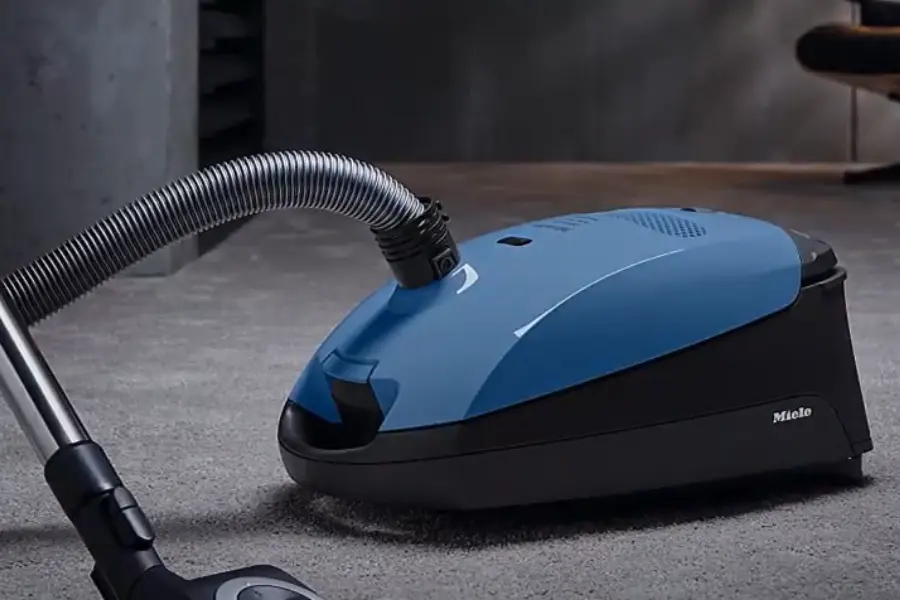
Regular Cleaning and Maintenance Routines
Cleaning the Vacuum Filters
To maintain the performance of your Miele vacuum, proper filter maintenance is essential. Clean filters will enable your vacuum to collect dust and allergens more efficiently. Before you begin cleaning your vacuum filter, check your user’s manual to identify the type of filter your model uses. Then, follow these steps:
- Turn off and unplug the vacuum.
- Locate and remove the filter(s) as per the manual’s instructions.
- Tap or gently shake the filter to remove loose debris.
- For washable filters, rinse them with cold water, allow them to dry completely, and reinsert as directed.
- For non-washable filters, replace them according to the recommended schedule.
Emptying the Dustbin or Replacing the Vacuum Bag
Ensure the trash can or vacuum bag is emptied regularly to maintain proper airflow and suction power. Neglecting this task can result in reduced vacuum performance and possible damage. Follow these steps for proper disposal:
- Turn off and unplug the vacuum.
- For bagless models, remove the dustbin as directed in the manual and empty it into a trash bag.
- For bagged models, replace the vacuum bag following the manufacturer’s guidelines. Do not overfill the bag.
- Seal the trash bag securely to prevent dust and allergens from escaping.
Brush Roll and Beater Bar Maintenance
Both brush rolls and beater bars are essential for efficient cleaning. Regular maintenance helps prevent clogs and ensures your vacuum can effectively pick up debris. Here’s how to maintain them:
- Turn off and unplug the vacuum.
- Access the brush roll and beater bar area as described in the manual.
- Remove any tangled hair, strings, or debris from the brush roll and beater bar. d. Inspect the condition of the bristles, and if they are worn or damaged, consider replacement.
- Reassemble the components securely as instructed in the manual.
Exterior Cleaning
Regular exterior cleaning keeps your Miele vacuum looking good and prevents dirt and debris from entering the internal components.
Follow these steps to clean the exterior:
- Ensure the vacuum is unplugged.
- Use a soft, damp cloth to wipe down the exterior surfaces.
- Avoid using abrasive cleaners or harsh chemicals, as they can damage the finish.
- Pay extra attention to the handle, buttons, and any touch screen or control panels.
Recommended Maintenance Schedules
- Daily Maintenance: Incorporating daily maintenance into your routine can extend the life of your vacuum and ensure peak performance.
Daily tasks include:
- Quick checks for clogs or blockages in the hose and brush roll area.
- Verification that the vacuum’s power cord and plug are undamaged.
Weekly Maintenance: Allocate time each week for more comprehensive maintenance. This includes:
- a. Removing and cleaning filters as necessary.
- b. Checking for any remaining debris or clogs in the vacuum’s air pathways.
Monthly Maintenance: To ensure the long-term health of your vacuum, you should perform monthly tasks consistently to prevent dirt build-up and potential damage.
- Inspecting and cleaning the brush roll and beater bar.
- Verifying the condition of the vacuum’s hoses and attachments.
Looking for more such informational blog topics? Read our recent blog post on Why does my shark vacuum keep stopping also you must know Miele Vacuum Troubleshooting Problems.
Share Real-Life Experiences of Users
“User Experience” 1
“I was using my Miele vacuum when suddenly it started to experience intermittent power issues. The vacuum would turn on and off unexpectedly, making it impossible to use effectively. Frustrated, I decided to investigate the problem. Upon closer inspection, I found a damaged power cord with visible wear and exposed wires. Clearly, the power cord had seen better days and needed immediate attention.
“User Experience” 2
“One day, I noticed that my Miele vacuum wasn’t performing as effectively as it used to. The brushroll, which is responsible for agitating and lifting dirt from carpets, wasn’t spinning properly. It seemed sluggish and less efficient. Frustrated by the drop in performance, I decided to investigate the issue.
Miele cat and dog upright vacuum troubleshooting
Miele Cat and Dog upright vacuum cleaners are renowned for their exceptional cleaning performance and durability, but like any appliance, they can encounter issues from time to time. Troubleshooting these problems effectively is essential to keep your vacuum running smoothly. Several common issues may arise with the Miele Cat and Dog upright vacuum.
One prevalent problem is reduced suction power. If you notice a decline in performance, check the vacuum bag or dustbin for blockages, and ensure the filters are clean and properly installed. Additionally, inspect the hose and brush roll for clogs or obstructions.
Another issue that users may encounter is unusual noises during operation. To address this, check the brush roll and remove any debris that might be causing the noise. It’s also a good idea to ensure the brush roll is properly seated in its housing.
If the vacuum doesn’t turn on, confirm that it’s properly plugged in and the power switch is in the “on” position. In case it still doesn’t work, it may be a blown fuse or a damaged cord. In such cases, it’s best to contact Miele’s customer support or an authorized service center for repairs.
Troubleshooting common issues with the Miele Cat and Dog upright vacuum involves checking for blockages, maintaining cleanliness, and ensuring proper assembly. If problems persist, it’s advisable to seek professional assistance for a thorough inspection and repair.
Miele upright vacuum troubleshooting
“You can use simple troubleshooting techniques to keep your Miele vacuum cleaner at peak performance. When you encounter Miele Vacuum Troubleshooting Problems with your upright vacuum, it’s essential to identify common concerns and implement appropriate solutions.”
First, check the power source and ensure the vacuum is plugged in properly if it won’t turn on. If there is still no power, check the cord for damage and replace it if necessary. Low suction power is another common problem. Usually, you can fix this by cleaning the dustbin, cleaning or replacing the filter, and inspecting the hose for blockages or clogs.
A burning smell or unusual sound may indicate a problem with the vacuum’s motor or other components. In such situations, it is recommended to seek assistance from a qualified technician or Miele’s customer service.
Regular maintenance is very important to prevent problems. Clean the brush roll regularly, as debris or tangled hair can impede its rotation. Additionally, regularly inspect the belts for wear and replace them as needed.
In summary, you must perform basic checks for power, suction, and maintenance when troubleshooting a vacuum on a steep mile. Following these instructions often solves common problems and keeps your Miele vacuum in excellent condition. If problems persist, it is best to seek professional help to ensure proper repair and long-lasting performance.
Miele complete c3 reset button
A reset button on the Miele Complete C3 vacuum cleaner is an important troubleshooting feature to keep the device at peak performance and address ‘Miele Vacuum Troubleshooting Problems.‘ This reset button is a safety feature and a workaround for common problems arising during use. Typically, you’ll find it on the vacuum cleaner’s body, which is often next to the power cord or motor. The reset button can solve various problems, such as a blocked vacuum vent or an overheated motor.
The reset button is valuable as it empowers users to deal with issues immediately without needing expert assistance. For example, pressing the reset button can clear the vacuum motor’s thermal protection if it overheats due to heavy use or a blockage in the system. This prevents the vacuum from shutting off unexpectedly, saving time and frustration during cleaning tasks.
The Miele Complete C3’s reset button is a convenient and user-friendly feature that extends the vacuum cleaner’s life and enhances its overall performance. It is a handy tool for dealing with common problems and ensuring consistent cleaning performance.
Why has my miele vacuum stopped working
There can be several reasons why your Miele vacuum stops working or encounters Miele Vacuum Troubleshooting Problems. The most common problem is a blockage or blockage in the vacuum hose, filter, or brush roller, which can obstruct airflow and reduce suction, making the vacuum less effective. To combat this, inspect the hoses and filters for any debris, dust, or foreign objects blocking airflow, and remove any obstructions you find to restore peak performance.
Another possible cause of vacuum malfunction is a full dust bag or a clogged dust container. When the bag or container is full, it can limit the vacuum’s ability to pick up dirt and debris. To prevent this problem, regularly empty the dust bag or clean the container.
Additionally, a problem with the power socket or an improper connection can cause an error. Make sure the power cord is correctly plugged into a working power outlet, and check for any visible damage. Also, ensure the vacuum’s settings are properly adjusted for your desired cleaning.
If following these troubleshooting steps does not resolve the problem, it may be necessary to consult the owner’s manual or contact Miele Customer Support for further guidance or professional repair services.
In short, problems like clogs, full dust bags, damaged cords, and incorrect settings can cause a Miele vacuum to lose effectiveness. These problems can often be solved with routine maintenance and careful troubleshooting. If the problem persists, it may be necessary to seek expert help.
“Reader Engagement”
“Have you encountered any issues with your Miele vacuum? We’d love to hear about your experiences, whether they were challenges or success stories. Share your stories in the comments or on our community forum.”
How to Troubleshoot Your Miele Canister Vacuum
Conclusion: Miele Vacuum Troubleshooting Problems
Miele vacuum troubleshooting Problems don’t have to be a daunting task. With these easy yet useful solutions, you can enjoy a seamless cleaning experience. Routine maintenance and prompt problem-solving are key to keeping your Miele vacuum in perfect working condition. Say goodbye to cleaning woes and hello to spotless floors once more!
FAQs
Why is my Miele vacuum losing suction power?
Suction power loss is often due to clogs or obstructions in the airway. Check for and remove these obstructions to restore performance.
What should I do if my Miele vacuum makes unusual noises?
If you hear strange noises, turn off the vacuum, inspect internal components, and contact Miele customer service or a technician if necessary.
Why won’t my Miele vacuum turn on?
A vacuum not turning on may be caused by a faulty power cord, a blown fuse, or switch problems. Check these components to identify the issue.
How often should I clean or replace the filters in my Miele vacuum?
The frequency of filter cleaning or replacement depends on the model and usage. Check the user manual for specific recommendations.
Can I perform Miele vacuum repairs myself?
While some maintenance tasks can be done by the owner, it’s often best to have complex repairs and servicing done by a certified Miele technician to ensure safety and effectiveness.



